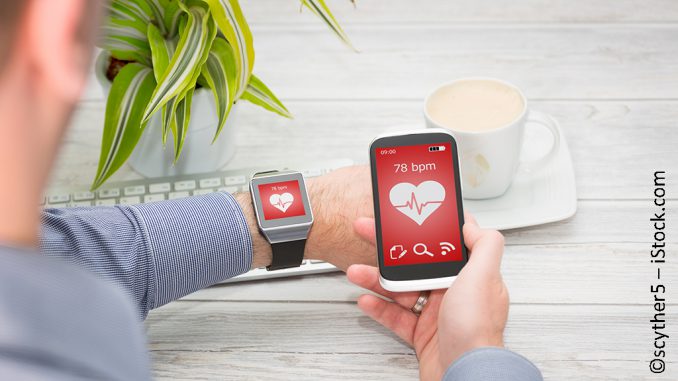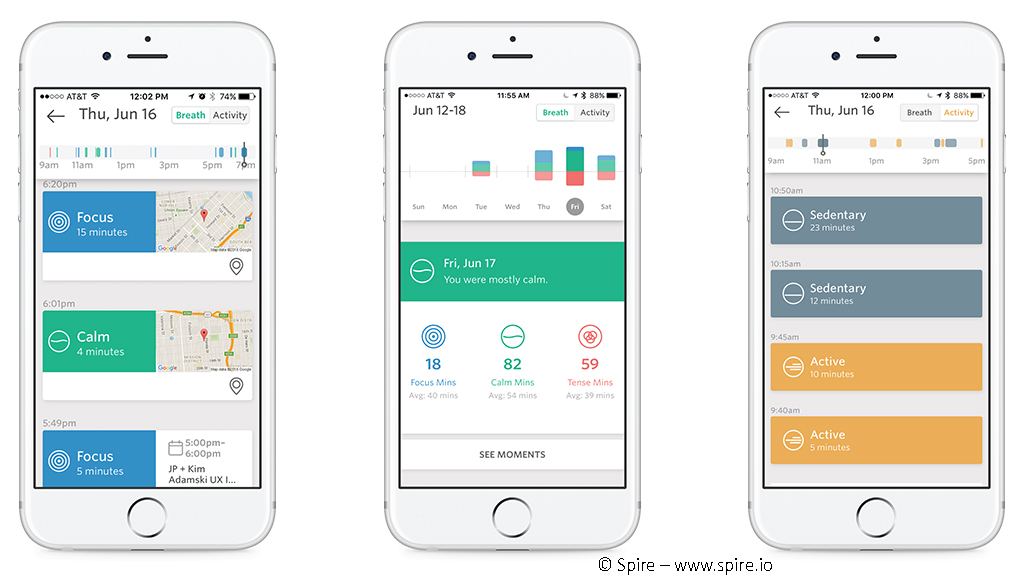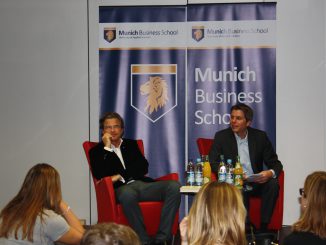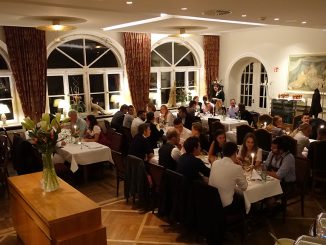
Mindfulness, meditation, and happiness in the sense of subjective well-being are currently the trending topics for employee training, and seminars in companies. Generally, the aim is to become aware of stress-inducing factors, and to learn to free oneself of them through exercises and retreats.
Part of these stress-inducing factors are technologies such as smartphones, email, and social media, which surround us on a daily basis, and often have a strong influence on our behavior. As part of getting back to the basics, people explicitly look for places with “no network” – neither WiFi nor cellular network, and thus make a “digital detox” possible. Yet, there is a movement that is concerned with how technologies can be used specifically to enhance one’s well-being.
Transformative technologies”, or “Transtech” for short, sometimes referred to as “well-being technologies”, are now the topic of the hour. A detailed overview is, for example, available here. Transtech is a scalable commercial hardware and software developed to improve subjective emotional and mental well-being. One of the centers of this movement is located at Sofia University, Palo Alto, in the middle of Silicon Valley. Its Transformative Technology Lab (TTL) hosts the annual Transformative Technology Conference, and keeps a list of the 200 most important Transtech companies and projects, mainly from the U.S., in which more than 1.6 billion USD have been invested over the past few years. Thus, TTL offers a significant anchor point for the community to exchange experience with projects at the interface between subjective human well-being and technology.
TTL currently divides the cosmos of transformative technologies into the following eleven areas:
- Sensor Tech (e.g., wearables such as Fitbit)
- Biofeedback Tech (e.g., Spire, which measures breathing rate and intensity)
- BioTech (e.g., 23andme for DNA analysis)
- Biostim Tech (e.g., vagus nerve stimulation with the help of gammaCore)
- NeuroTech (e.g., Muse)
- Neurostim Tech (e.g., neurostimulation with the help of Halo Sport headphones)
- Sleep Tech (e.g., with the help of kokoon headphones)
- Perception Tech (various Virtual Reality and Augmented Reality devices)
- Healthy Spaces Tech (e.g., the portable air pollution monitor Atmotube)
- App Tech (various apps such as, for example, Headspace)
- Data Tech (AI, Big Data, Real-Time Analytics)
The technologies used are non-invasive; meaning nothing is put into the body. The devices used are located close to the body or are worn directly on it. Accordingly, these technologies must, on the one hand, be able to analyze relevant parts of the human body from the outside and, on the other hand, to stimulate these parts directly, or at least to give the user some kind of signal for a corresponding behavioral change.
One way for Transtech to help users reduce stress could be, for example, to “make them aware of their breathing”. Even though one normally breathes automatically, it is still possible to consciously control one’s breathing, at least for a certain period of time. Hence, for example, we can stimulate our parasympathetic nervous system by means of breathing exercises, deep breathing, or Qigong. This has a calming effect, in contrast to the sympathetic nervous system, which is stimulated during stress, anxiety, fatigue etc. Thus, it is possible, for example, to consciously lower one’s pulse and blood pressure by taking a detour via breathing exercises. Such breathing would be very beneficial for positive well-being. However, daily life constantly distracts us. Our breathing is shallow and short, and thus we let our body, nervous system, and brain experience stress.
Today’s great supply of transformative technologies also includes some that are suitable in this case, such as Spire from the biofeedback sector. This little device, which looks like a stone, is worn on the inside of one’s waistband, where it measures breathing frequency and depth based on abdominal movements while breathing. It follows a specially developed algorithm for transmitting short vibrations to remind the user during tension phases, for example, to breathe deeply, and more regularly. An app also lets one track precisely (based on the breathing measurements) when one has been in a tense, focused, or calm state of mind. This app also uses optical signals to help adjust breathing to the individual user´s average breathing rate.

In view of a constantly changing work environment, and the fact that most employees throughout the world regard work as a burden, companies are also becoming increasingly interested in the possibilities of Transtech. Thus, numerous companies use diverse Transtech offers, mostly as part of their corporate health programs. Various Transtech providers have adjusted to this demand. For example, focus@will, which offers music and sounds that helps employees concentrate, has introduced team licenses (focus@Will for Teams). Lumo Lift, a small sensor that is worn under one’s clothing right below the collarbone, vibrates to remind its wearer to assume good posture, can also be obtained as part of a “corporate wellness” program. Lumo’s customers include companies such as Facebook, Google, Exxon Mobile, and Nestlé. Muse, a wearable device in the form of a headband that helps to optimize meditation by means of real-time EEG feedback also offers special corporate wellness programs. Of course, in all these cases, the companies aim to enable their employees to develop their productive potential in the company as much as possible.
Outlook
Numerous devices and applications have reached market maturity in the past few years, and are more or less popular. However, in many cases, product development has been stuck for quite some time, especially because the impact on our well-being (still) could not always be clearly demonstrated.
While today in the NeuroTech and Neurostim Tech sectors, it is possible for private users to use devices that were previously only available in the medical field, there is still a lack of reliability, or sustainable effects proven by research. Hence, we still find ourselves at the dawn of the Transtech era, time and again with empty promises.
Nevertheless, entrepreneurs, working together with experts from the fields of medicine, engineering, and design, are making rapid progress, and users are open to devices that promote their mental and emotional well-being. However, it remains to be seen how digital detox and Transtech will ultimately get on with each other, and whether the use of Transtech will not lead to more, because not until Transtech was used did the potential for mind and body optimization become transparent for many people. Now, this potential must actually be reached.
In Part 2 we will take a look at the unique features of NeuroTech and NeuroStim Tech, and the possibilities for using them in companies throughout the world.





